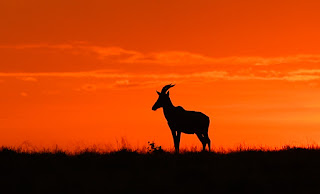Recently, I embarked on an unforgettable wildlife photo safari in the stunning landscapes of Naboisho Conservancy and Olare Motorogi Conservancy in Kenya. Known for their rich biodiversity and breathtaking scenery, these conservancies offered an incredible backdrop for capturing the beauty of Africa’s wildlife.
Naboisho Conservancy: A Photographer’s Paradise
Our adventure began in Naboisho Conservancy, a hidden gem that boasts an impressive array of wildlife. This community-run conservancy is home to a diverse range of species, from the majestic lions and elusive leopards to the graceful giraffes and herds of elephants. The open savannahs and acacia woodlands provided the perfect canvas for stunning photographs.
As the sun rose, casting a golden hue over the plains, we set out on our first game drive. The early morning light illuminated the landscape, creating a magical atmosphere. We were fortunate enough to spot a pride of lions lounging in the grass, their golden coats blending seamlessly with the terrain. The sight was awe-inspiring, and I eagerly snapped photos, trying to capture their regal presence.
Olare Motorogi Conservancy: A World of Wonders
After exploring Naboisho, we moved to Olare Motorogi Conservancy, where the wildlife sightings continued to impress. This area is renowned for its high concentration of big cats, and we were not disappointed. One afternoon, we encountered a cheetah stalking through the tall grass, its keen eyes fixed on a herd of gazelles. The thrill of witnessing such raw nature was exhilarating, and I felt privileged to be able to document this moment.
The conservancy is also a haven for birdwatchers. With over 300 species recorded, I took a moment to appreciate the vibrant colors and unique behaviors of various birds. From the striking lilac-breasted roller to the graceful African fish eagle, each sighting added to the richness of our experience.
Connecting with Nature
Throughout the safari, our knowledgeable guides shared insights about the animals and their habitats, deepening our appreciation for the delicate balance of this ecosystem. We learned about the importance of conservation efforts in these areas and how the local communities play a vital role in protecting wildlife.
The experience was not just about photography; it was about connecting with nature and understanding the challenges faced by wildlife in today’s world. Each encounter with the animals reminded us of the beauty and fragility of life in the wild.
Tips for Aspiring Wildlife Photographers
For those considering a wildlife photo safari, here are a few tips to enhance your experience:
1. Early Starts: Wildlife is most active during the early morning and late afternoon. Plan your game drives around these times for the best sightings.
2. Patience is Key: Wildlife photography often requires waiting for the perfect moment. Enjoy the surroundings while you wait; you never know what might happen.
3. Invest in Good Gear: A camera with a good zoom lens is essential for capturing distant subjects. A tripod can also help stabilize your shots.
4. Learn About Your Subjects: Understanding animal behavior can help you anticipate actions and improve your chances of getting that perfect shot.
Conclusion
My wildlife photo safari at Naboisho and Olare Motorogi Conservancies was a quite a success. The stunning landscapes, incredible wildlife, and the opportunity to connect with nature made it an experience of a lifetime. Whether you’re an aspiring wildlife photographer or simply a nature lover, these conservancies offer a unique chance to immerse yourself in the wild and capture unforgettable moments. I can’t wait to return!







.jpeg)













No comments:
Post a Comment